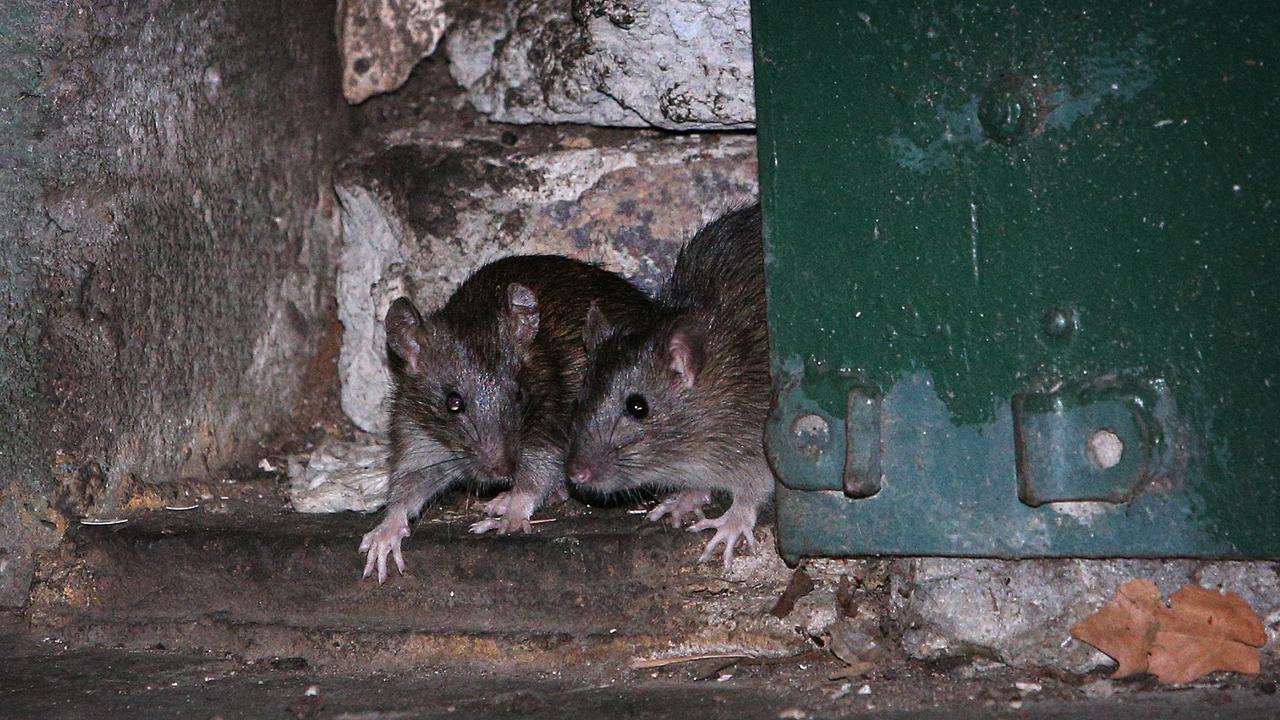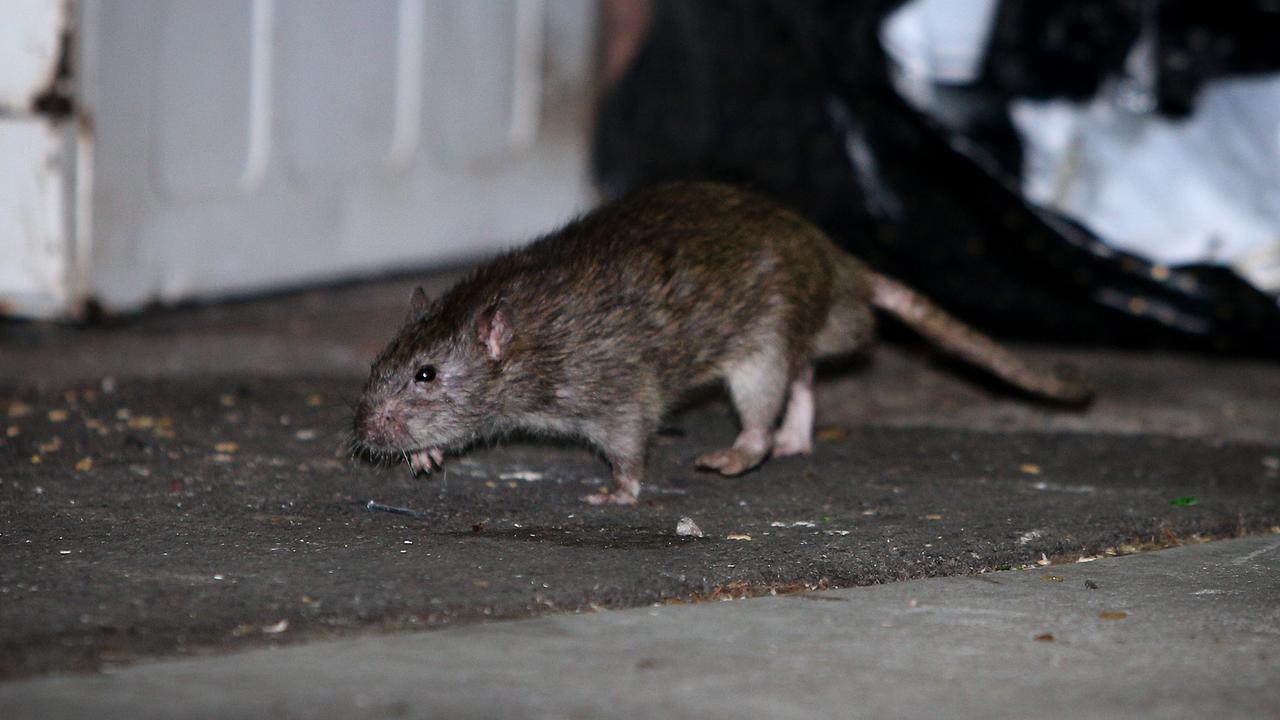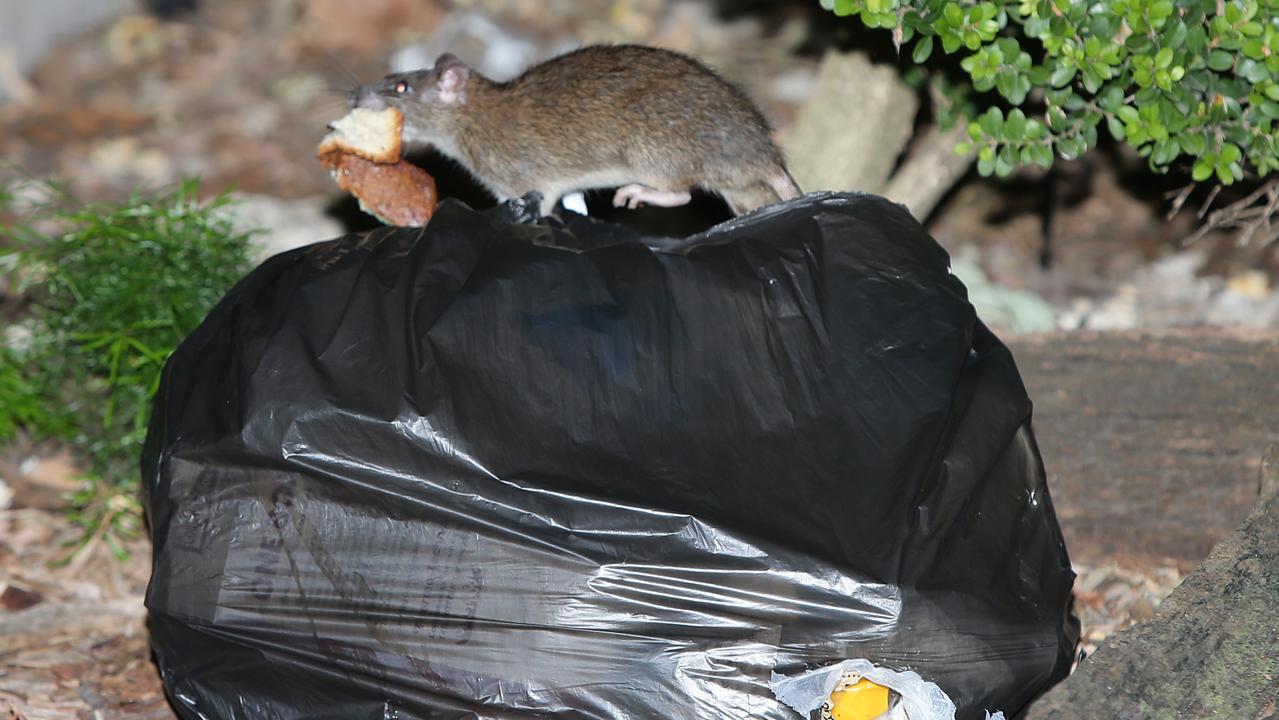Warning issued as New York rats turn savage amid coronavirus pandemic
A warning has been issued over “unusual and aggressive” populations of rats who are being pushed into new areas due to restaurant closures.
Coronavirus shutdowns have led to an explosion of rogue, ravenous rats.
The latest health warning from the US Centers for Disease Control and Prevention (CDC) said the rodents have been starved of restaurant leftovers over the past two months and will likely make themselves known.
In a species adapted to resort to cannibalism during hard times, the CDC in the US has warned of “unusual or aggressive rodent behaviour” stemming from their lockdown starvation diet.
The City of Sydney recently announced it had doubled the amount of rats caught from February to March, as coronavirus shutdowns caused the rodent populations to shift in the city.
RELATED: Coronavirus Australia: Rats on rise as COVID-19 shutdown cuts their food supply


Last month, rodents were seen resorting to open warfare, cannibalism and eating their young following shutdowns to restaurants and other food sources that they rely on. But that was in April. With limited or no service at restaurants and other food-service outlets comes a lack of food scraps littering alleyways and bins.
“Community-wide closures have led to a decrease in food available to rodents, especially in dense commercial areas,” the CDC said in recently updated rodent-control guidelines.
“Some jurisdictions have reported an increase in rodent activity as rodents search for new sources of food. Environmental health and rodent control programs may see an increase in service requests related to rodents and reports of unusual or aggressive rodent behaviour.” New Orleans is one of those jurisdictions.

“I turn the corner, there’s about 30 rats at the corner, feasting on something in the middle of the street,” Charles Marsala of New Orleans Insider Tours and AWE News told CBS News, adding he had never seen anything like it.
Rat upheaval is common during natural disasters such as hurricanes, the CDC noted. Their populations decline and then rebound as commercial activity returns to normal. The rats that survive are nasty.
But the CDC said a rat invasion was not inevitable, advising preventive actions such as sealing access into homes and businesses, removing debris and heavy vegetation and keeping rubbish in tightly covered bins.



